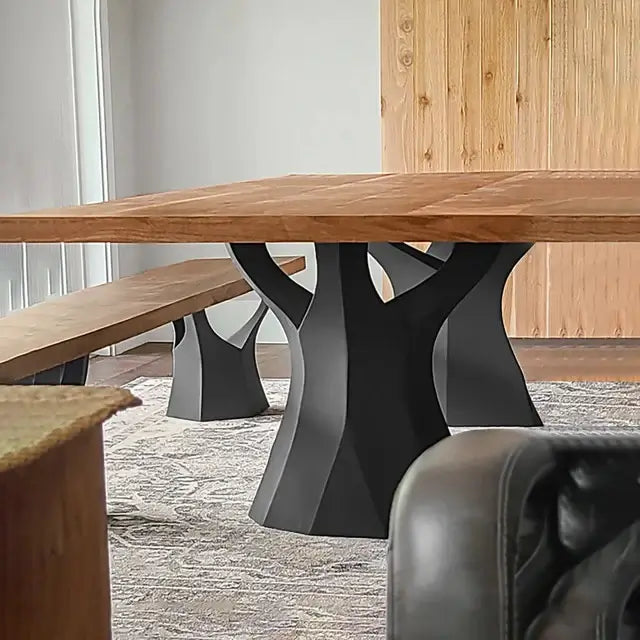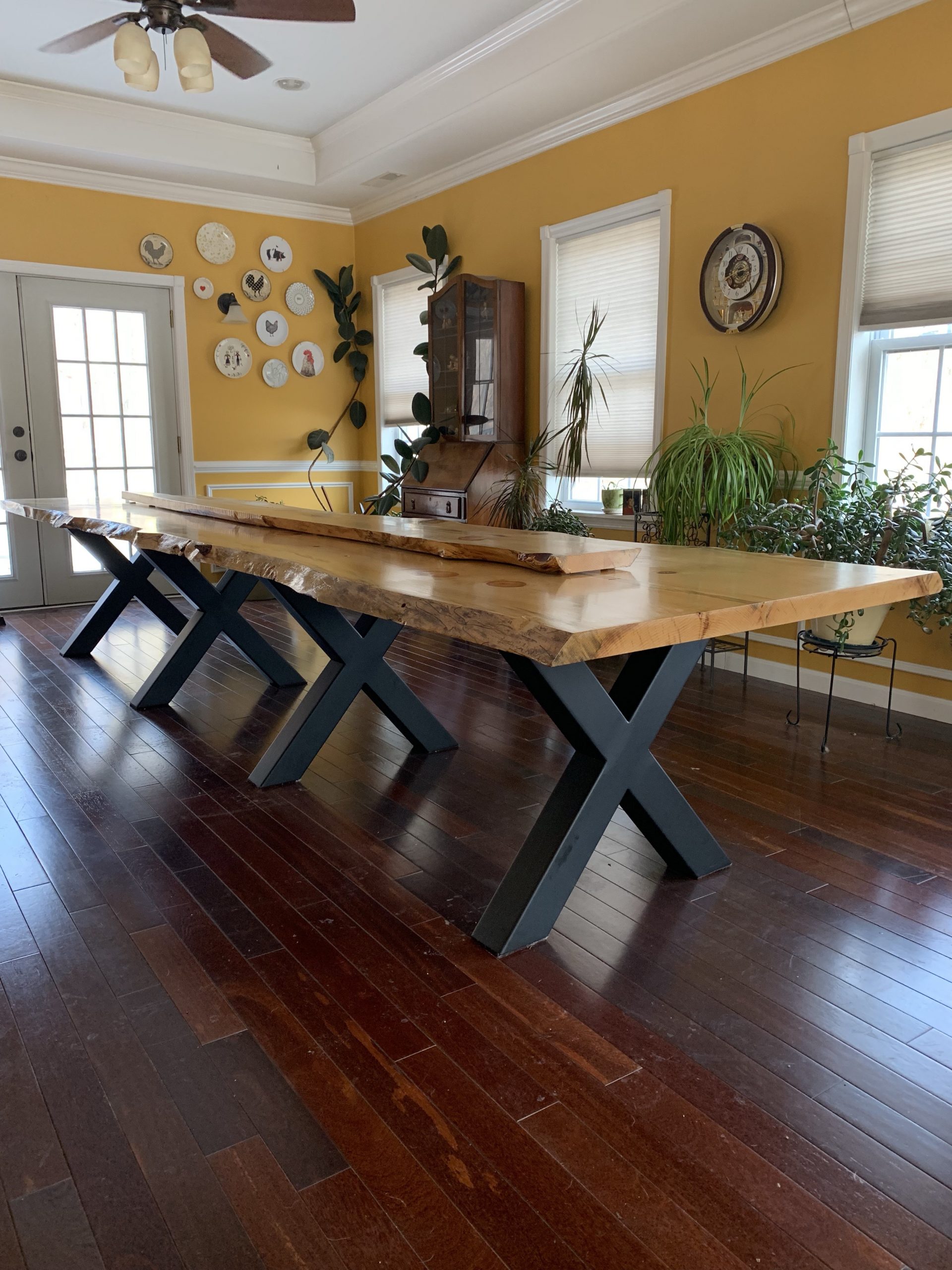Sturdy and Trendy Selections for Durable Dining Table Legs Wood Solutions
What to Consider When Picking Table Legs Timber for Your Home.
When selecting timber for eating table legs, a number of crucial aspects warrant cautious factor to consider to guarantee both capability and aesthetic charm. The kind of wood selected can significantly affect the table's durability, security, and total style, while the maintenance needs may influence long-term functionality. In addition, the interplay of grain patterns and color with existing home furnishings can develop a cohesive design. Comprehending these components is important, yet lots of forget the crucial element of monetary restraints. As we explore these considerations even more, the ramifications of your selections might reveal unexpected challenges and opportunities.

Value of Timber Type
When choosing table legs, the choice of wood kind plays a crucial function in figuring out both aesthetics and toughness. Various wood species use differing degrees of resistance, weight, and strength to wear, which can considerably affect the capability and long life of the table. Hardwoods such as cherry, maple, and oak are often chosen for their robust nature and capability to stand up to daily usage. These woods not only provide structural integrity yet also stand up to scratches and damages far better than softer choices.
Alternatively, softer woods like poplar or pine, while more cost-efficient, might not provide the same degree of longevity and may call for more frequent maintenance or substitute. The wood type also affects the table's capability to withstand environmental variables such as humidity and temperature variations. Moreover, the choice of wood can impact the ease of staining and completing, which can be important for achieving the preferred look.
Aesthetic Factors To Consider
The visual allure of table legs dramatically contributes to the total aesthetic of the eating space. Dining Table Legs Wood. When choosing timber for dining table legs, the grain shade, finish, and pattern are crucial elements that can improve or take away from the area's design. Different timber kinds exhibit varying structures and hues; for instance, oak provides a timeless look with popular grain, while walnut uses an abundant, dark elegance
Furthermore, the form of the legs plays a crucial function in specifying the table's personality. Streamlined, minimalist legs can create a contemporary feel, while a lot more luxuriant, transformed legs stimulate typical charm. The style of the legs ought to balance with existing furnishings and the total motif of the area, whether it be rustic, modern-day, or transitional.
It is also vital to think about exactly how the legs engage with various other furnishings items, consisting of sideboards and chairs. A natural style not only raises the dining experience yet also adds to the home's total visual comprehensibility. Inevitably, the option of table legs need to be a thoughtful decision that shows personal taste while ensuring visual consistency within the room.

Longevity and Security
Sturdiness and security are critical aspects in the option of table legs, as they directly influence the durability and safety and security of the furnishings. When choosing wood for eating table legs, one have to consider the fundamental buildings of various wood types. Hardwoods, such as cherry, oak, and maple, are often preferred for their strength and resistance to wear, making them suitable for high-traffic eating locations.
In enhancement to look at this website the sort of timber, the building and construction approach additionally plays a substantial duty in the total security of the table. Legs that are solidly built, either via traditional joinery techniques or modern engineering techniques, will certainly offer enhanced assistance and prevent wobbling. It is necessary to assess the density and style of the legs; thicker legs are normally a lot more steady and can endure greater weight.
Moreover, discover this info here the ecological problems in which the table will be used can influence longevity. Timber that has been correctly treated for dampness resistance will perform much better in damp environments. Ultimately, picking the ideal combination of sturdy timber and stable construction will certainly guarantee that your table continues to be a practical and safe focal point in your home for years ahead.
Maintenance Needs
Choosing table legs made from long lasting wood is simply the beginning; recognizing maintenance needs is similarly vital to protect their look and performance. Various wood kinds require differing levels of treatment, so it is important to recognize what is needed for your details choice.
Normal cleaning is essential; utilize a soft, moist towel to eliminate dirt and debris. Prevent rough chemicals that can damage the surface. For timber surfaces like varnish or lacquer, routine polishing with furniture wax can boost shine and offer a safety layer versus scratches.
Preventative actions are important (Dining Table Legs Wood). Usage placemats and coasters to prevent straight call with hot or wet things, which can warp or stain the wood. Furthermore, take into consideration placing felt pads under the legs to avoid scrapes on your floor covering and reduce endure the wood
Moisture control is an additional substantial factor; maintaining a steady atmosphere aids to stop warping and breaking. If your dining area is susceptible to variations in temperature level and dampness, take into consideration using a humidifier or dehumidifier as necessary.
Budget Plan and Expense Elements
When preparing to buy table legs, understanding budget plan and cost elements is vital to make a notified decision. The type of wood picked for the legs dramatically affects the total cost. Hardwoods, such as oak or walnut, tend to be more expensive than softwoods like ache, as a result of their toughness, visual charm, and scarcity. Additionally, take into consideration whether you are acquiring pre-made legs or choosing for personalized styles, as personalization frequently sustains greater expenses.
Labor and craftsmanship additionally play a critical duty in the overall expenditure. Handmade or artisan-crafted legs may lug a premium cost, showing the skill and time bought their production. It's critical to analyze the equilibrium between top quality and cost; investing much more in advance can cause a longer-lasting product that needs much less upkeep over time.
Verdict
In recap, choosing the proper wood for eating table legs requires cautious factor to consider of numerous factors, including wood kind, aesthetic appeal, spending plan, durability, and upkeep restraints. The selection of woods such as oak and maple read here can boost both strength and visual appeal, while softer woods may be much more cost-effective however less enduring. Eventually, a knowledgeable choice relating to product choice will certainly add to the general capability and long life of the table, making certain a beneficial financial investment for the home.
When picking timber for eating table legs, a number of important elements require cautious consideration to ensure both functionality and visual allure.When choosing dining table legs, the choice of timber kind plays a critical function in figuring out both looks and toughness. When choosing wood for eating table legs, the grain pattern, shade, and surface are crucial aspects that can enhance or take away from the area's style. When choosing timber for dining table legs, one must take into consideration the intrinsic homes of various timber types.In recap, selecting the ideal wood for eating table legs requires careful factor to consider of various aspects, including timber type, visual appeal, spending plan, resilience, and upkeep restrictions.